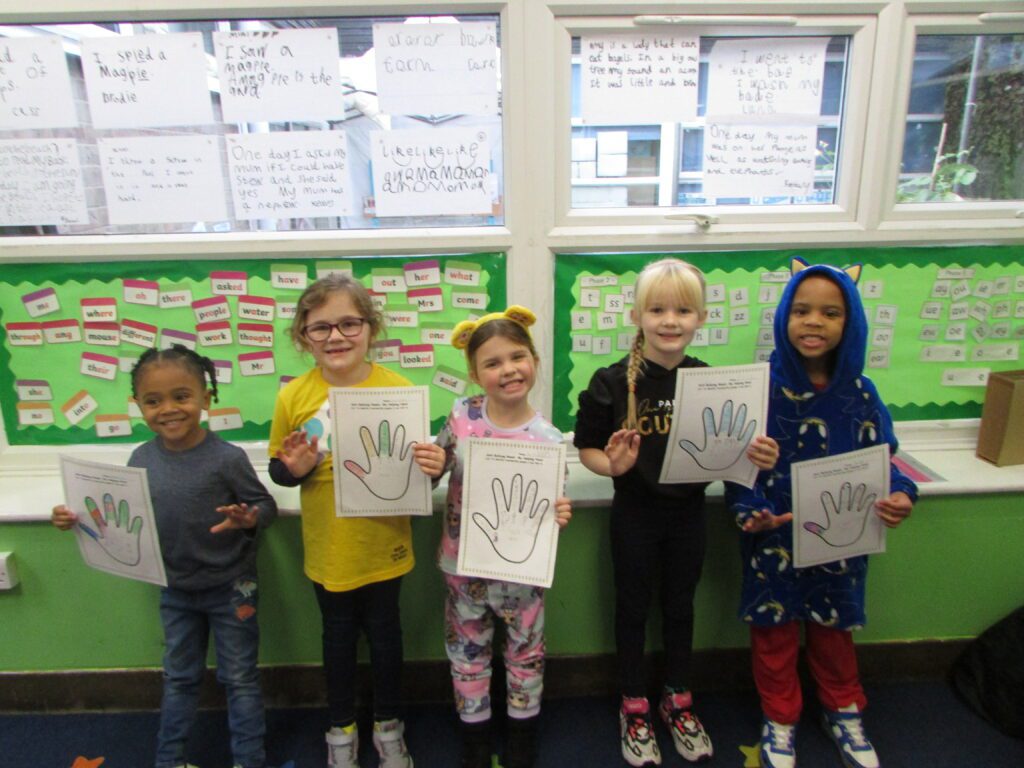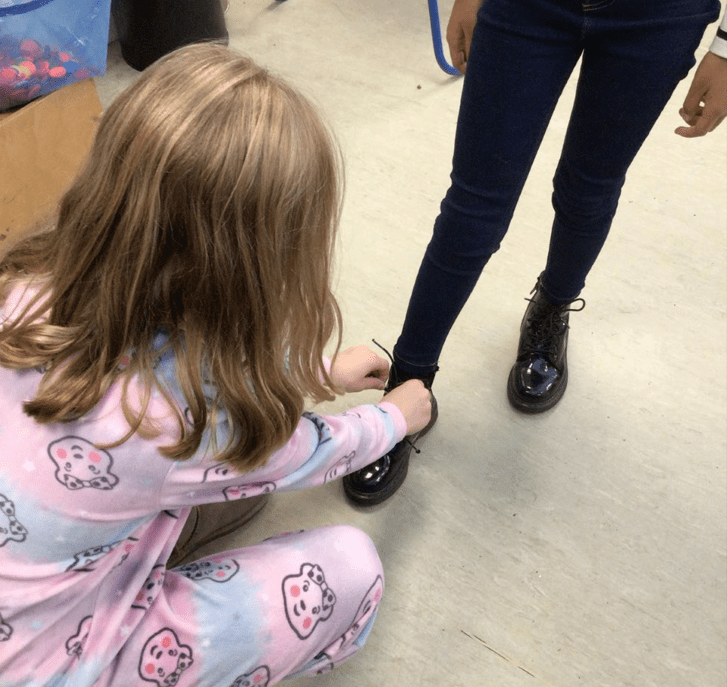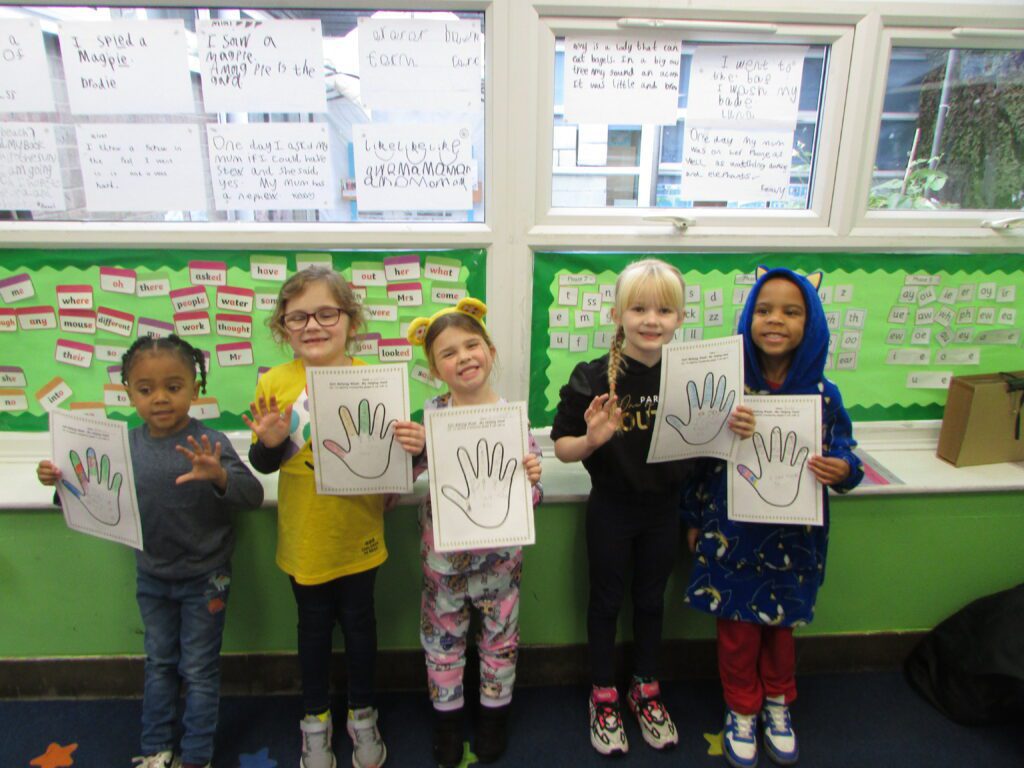Nursery
In Nursery we explored what it means to be a good friend. We used role play as a stimulus to identify kind and unkind behaviour and what we can do if we experience unkind behaviour. We practised saying “Please don’t do that, I don’t like it” which has been very effective, children have been using this phrase during independent play to try and solve conflicts without adult support.
![IMG 0008[1]](https://b2054337.smushcdn.com/2054337/wp-content/uploads/2023/12/IMG_00081-765x1024.jpg?lossy=1&strip=1&webp=1)
Reception
For anti-bullying week we watched the story ‘Topsy & Tim Help a Friend’ and we discussed the good/bad things that were happening in the story and what we can do to help. We created key phrases that we could say if we experience or see bullying happening including ‘Please don’t do that…I don’t like it / that’s not kind / that is hurting me.’ We have heard several children using these phrases in the Foundation Unit as a result. It has also helped to prompt their peers when they have seen something unkind. We also talked about what ‘bullying’ means and used the STOP phrase to help remind us (several times on purpose). The children wrote key phrases on speech bubbles and practised the stop sign too.
Year 1
In Year 1, we thought about what bullying was and learnt that it is repetitive, intentional and hurtful. We learnt about how we are all different and that differences are something that should be celebrated! Then, we talked about who could help us if we felt someone was being unkind. We made ‘helping hands’ to remind us of five people we could talk to if we saw someone being unkind or if someone was being unkind to us.

Year 2
Year two have been looking at kindness this Anti-Bullying week and ways that we can show we care. We read and explored the story ‘Troll Stinks’ and discussed how Troll was treated by the goats. We decided that one of the most important things is to treat others how we’d like to be treated

Year 3
During our anti-bullying week, we focussed on discrimination looking at different minority groups in society. To begin with the children identified all of the different things which make us unique, before we discussed how these qualities can sometimes be used to bully people.
We then looked at how bullying had affected the life of famous Paralympian swimmer Ellie Simmonds, specifically during her time on Strictly Come Dancing. We wrote positive affirmations to remind her of how brilliant she is and presented these as a poster. The children worked in small groups to role-play various situations where discrimination had lead to bullying. They talked about how these situations could be resolved and then turned these into comic strips which could be shared to spread our anti-bullying message.
Year 4
In Year 4, we looked at the different types of bullying: verbal, physical, emotional, online and indirect. We read some character stories and looked at how and where the bullying happened. We learnt about the difference between banter and bullying and we recognised that there is a tipping point when it can change from one to another. We also talked about the importance of telling an adult about any behaviour we are unhappy with.
Year 5
For anti- bullying week in Year 5, we explored the differences between cyber bullying and in person bullying and how we can report this. We also came up with a definition to establish what snitching was and what reporting was. Snitching is to get somebody INTO trouble whereas reporting gets somebody OUT of trouble.
We drew out a definition dictionary explaining the words and what roles these people would play. These included: perpetrator, victim, bystander, outsider, reinforcer, defender and assistant. After creating this, we worked in groups to create a piece of drama, taking on each of these roles. Chile class focused on cyber bullying and Costa Rica focused on in person bullying. In year 5, we are now very confident to report bullying to a trusted adult and we are aware that for a situation to be classed as bullying it must happen more than once with the intention to purposely hurt someone.

Year 6
During anti-bullying week, year 6 focused on what it means to be an upstander and what it means to be a bystander. We looked at examples of celebrities, such as Jesy Nelson and Marcus Rashford, who have been bullied online and been the victims of trolling and racism. We used these examples to understand how we can be upstanders in these situations and how they were supported by friends, family and members of the public. We created a blog to help others understand the effects of trolling and we made our own Marcus Rashford murals with messages of support of them for him.


